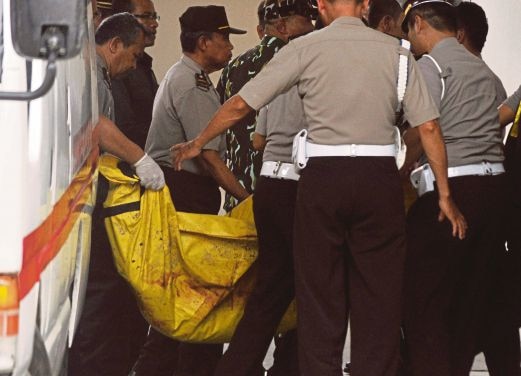IN a period where a failed coup attempt, a global fever over virtual monsters, and an international tribunal’s ruling on a long-disputed piece of sea battle made headlines, news of a recent counterterrorism victory in neighbouring Indonesia quietly slipped into the “international” section of many newspapers.
Santoso, Indonesia’s most wanted terrorist, is dead. For years, the leader of Mujahidin Indonesia Timur (MIT) had launched numerous, albeit minor terror attacks against the populace of Poso, Central Sulawesi, while eluding the attention of security forces by hiding in the area’s jungles and mountains.
On July 18, Santoso and fellow militant Muchtar were killed in an ambush by nine personnel of Indonesia’s Army Strategic Reserve Command.
With him neutralised, over 3,500 military and police officers involved in Operation Tinombala are now hunting the remaining MIT militants dispersed throughout outer-Poso’s jungle and mountainous terrain.
This is indeed a call for celebration. Not only did the “snake” have its head chopped off, Santoso’s and Muchtar’s deaths highlight MIT’s unmitigated loss of members due to the arrests and killings at the hands of Indonesian security forces. Starting out the year with 45 militants, the rank and file now are filled with only 19 individuals.
Santoso’s absence poses a significant hurdle for the MIT members to regroup and devise a future strategy, and combined with its dwindling number, critically damages the reputation of the group domestically and internationally.
We might actually see a drop in the number of terrorist aspirants travelling to Poso to train with MIT as a result of the group’s plummeting influence. For one, the members of the East Turkestan Islamic Movement, some of whom have migrated from Western China only to meet their untimely end in Indonesia’s prisons or graveyards, would no longer perceive MIT’s Poso as a potential destination for their militant training, provided the latter fails to rise from the ashes.
These setbacks would also shrink MIT’s chances of turning Poso into Daesh’s (Islamic State) satellite caliphate. Having previously pledged allegiance to Daesh under Santoso, MIT has in recent times been quickly eclipsed by the rising profile of Abu Sayyaf through the latter’s barbaric criminal and terrorist activities.
This has culminated in the latest declaration of Abu Sayyaf’s Basilan territory as Daesh’s new centre of gravity in Southeast Asia in a video titled “Al-Bunyan Al-Marsus” (A Solid Structure), released by Katibah Nusantara on June 22.
And yet, there is still a possibility that Daesh could announce MIT’s Poso as part of Daesh-controlled territory — rather than a satellite caliphate — that can coexist with another (Abu Sayyaf) in close proximity. This, however, would deplete Daesh’s resources in Southeast Asia and damage its political integrity among supporters in the region.
Despite this, it is premature to associate Santoso’s death with the certain demise of MIT. Soon after the gunfight, the police speculated that Basri aka Bagong, another high-profile MIT member, was likely to take over Santoso’s vacated seat. Basri, a convict sentenced to 17 years in jail for mutilation of a high-schooler, is currently believed to be hiding in the depths of the Poso jungle, and has the capacity to give a second wind to the limping terror group.
Fortunately, Indonesia’s Coordinating Minister for Political, Legal and Security Affairs, Luhut Pandjaitan, has announced that Operation Tinombala will be sustained until the remaining MIT members surrender or are routed.
However, it might not end there. Shortly after the announcement of Santoso’s death, Daesh issued an edict via its Bahasa Facebook page calling the group’s supporters to exact vengeance against the security forces. Furthermore, MIT is known to serve as the middleman between terrorist groups in Indonesia and Southern Philippines.
Even if MIT is completely removed from the equation, terrorist groups from both sides might establish a minor presence in post-MIT Central Sulawesi to reconnect the two sides, which means that the area might continue to house militant movements in varying degrees. A sufficient amount of security measures must be maintained to keep the area sterilised.
The security forces’ task must go beyond the hard approach. The Poso locals’ long exposure to multiple variations of conflict has instilled some sort of acceptance towards militants roaming the area, and MIT members are often offered shelter and assistance by the villagers. At this point, it is safe to assume that local support towards MIT might be entrenched.
This is why, when Operation Tinombala draws to a conclusion, it must transform or be complemented with mass deradicalisation measures to dismantle local populations’ predilection towards militant and anti-establishment groups. Rehabilitation programmes aiming to improve the livelihood of people affected by MIT atrocities would be equally vital to ameliorate the welfare of the locals and rebuild their confidence in the government.
The police and the military must methodically follow these steps if we are to be rid of the MIT threat once and for all. However, the leadership of the Indonesian military seems to invest much of its attention on the questionable assumption that the LGBT community and the communists are threatening the integrity of the state. The military’s current campaign to oppose the proliferation of both groups, plus its cooptation with some hardline Muslim groups to reinforce its claim, would undeniably divert its full force from eliminating a palpable threat from MIT and undermine any soft approach carried out by the military.
Operation Tinombala has been a success so far not only for its instrumental role in eliminating public enemy number one, but also for dramatically degrading MIT to its current debilitated state. Rather than perceiving Santoso’s death as the end of an era, it is more suitable to think of it as a new chapter in the trajectory of Indonesia’s counterterrorism.
The security forces must expand its role beyond eradicating MIT terrorists and engage in comprehensive follow-up measures immediately.
This article first appeared in New Straits Times on 26 July 2016.





